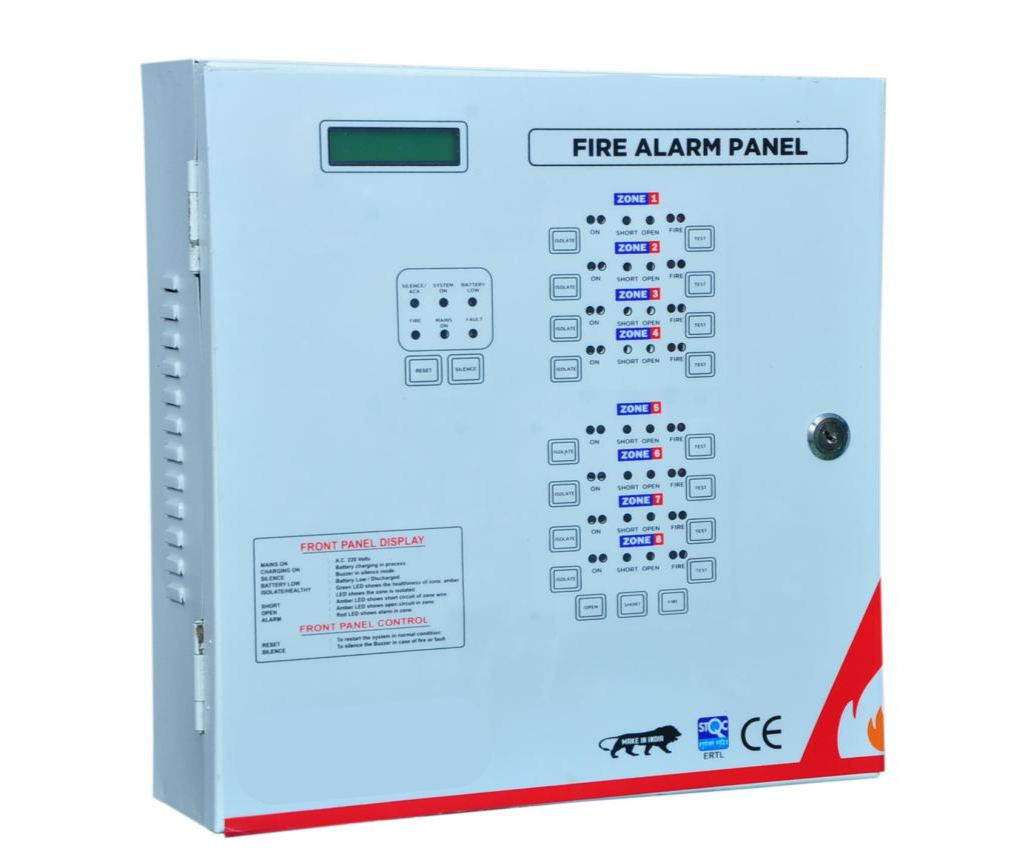Fire Alarm Systems
ADIKAM ENGINEERING FIRE ALARM SYSTEM
A fire alarm system is a crucial safety measure designed to detect fire, heat, or smoke and provide immediate alerts to building occupants for evacuation. These systems play a vital role in ensuring safety during emergencies. There are two main types of fire alarm systems: conventional fire alarm systems and addressable fire alarm systems.
At Adikam Engineering, we design and install fire alarm systems in compliance with NFPA standards and Indian safety standards. These systems can be activated automatically through smoke and heat detectors or manually via activation devices such as manual call points (MCPs) or pull stations.
Key Components of a Fire Alarm System:
1. Control Panel (The Brain):
The control panel serves as the central hub of the fire detection and alarm system. It monitors input devices, such as:
- Manual Call Points (MCP): Allows occupants to manually activate the alarm.
- Automatic Detectors: Includes heat detectors and smoke detectors that identify fire conditions.
Once activated, the control panel triggers output devices, such as:
- Audible alarms (horns, bells).
- Visual alarms (warning lights).
- Emergency telephone dialers.
- Building control systems for evacuation and safety protocols.
Control panels vary in complexity, from basic units with a single input/output zone to sophisticated, computer-driven systems capable of monitoring multiple buildings across a large facility.
By providing reliable and customized fire alarm systems, Adikam Engineering ensures comprehensive fire safety solutions tailored to your specific needs.

Conventional Fire Alarm System
The conventional fire alarm system is designed to divide a building into multiple zones for effective monitoring and detection. This system is available in configurations ranging from 2-zone to 32-zone, catering to various building sizes and requirements.
Features of the Conventional Fire Alarm System:
1. Input Devices:
The system is compatible with conventional input devices, including:
- Two-wire smoke detectors: Detect the presence of smoke in specific zones.
- Pull stations: Allow manual activation of the alarm system.
- Other normally open contact devices: Trigger alarms based on specific conditions.
2. Output Capabilities:
The panel includes four Notification Appliance Circuits (NACs) that power devices such as:
- Horns
- Strobes
- Bells
This configuration ensures clear and immediate communication during an emergency, allowing efficient evacuation and response.
Conventional fire alarm systems by Adikam Engineering are designed for reliability, scalability, and ease of use, making them an ideal choice for small to medium-sized buildings.
Addressable Fire Alarm Systems
The addressable fire alarm system offers advanced fire detection and monitoring capabilities by assigning a unique address to each connected device, such as smoke detectors, heat detectors, manual call points (MCPs), hooters, and other components.
Key Features of Addressable Fire Alarm Systems:
1. Individual Addressing:
Each device is assigned a unique address that is recognized by the fire alarm panel. This enables precise identification of the device triggering the alarm, providing the exact location of the fire.
2. Efficient Fire Detection:
The ability to pinpoint the exact location of the fire, even in multi-storied buildings, significantly reduces the time required to locate and respond to an emergency.
3. Enhanced Monitoring:
The fire alarm panel continuously monitors all connected devices for faults, malfunctions, or activation, ensuring reliable performance at all times.
Addressable fire alarm systems are ideal for larger buildings and complex facilities where accuracy, speed, and efficiency in fire detection are critical. At Adikam Engineering, we deliver cutting-edge addressable fire alarm systems to ensure maximum safety and rapid emergency response.
